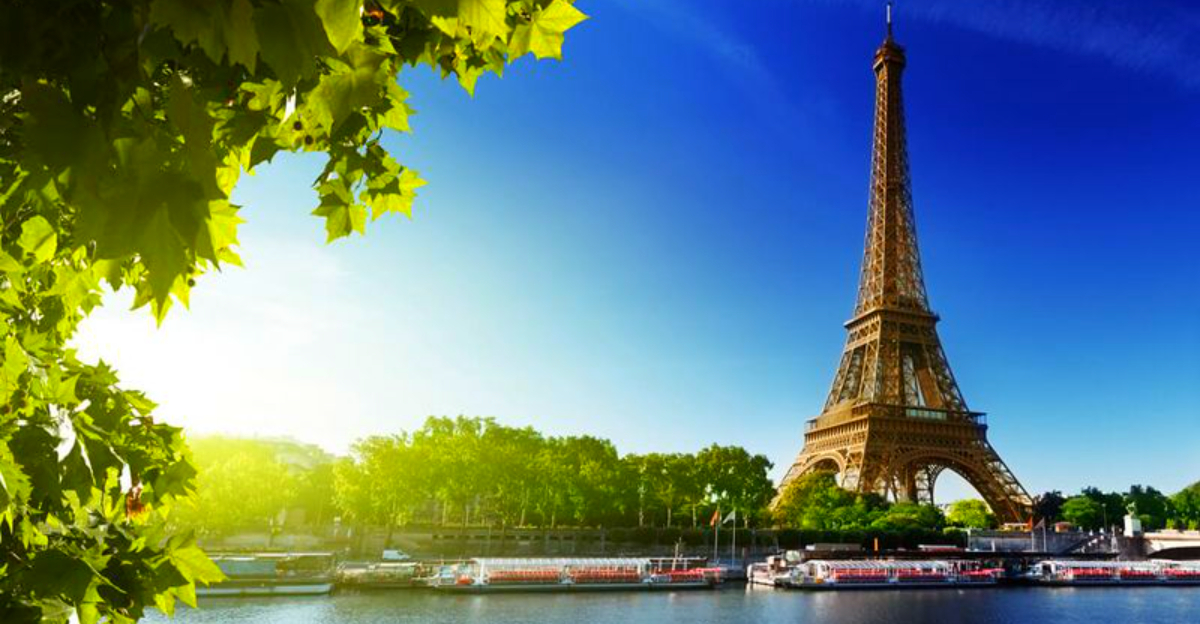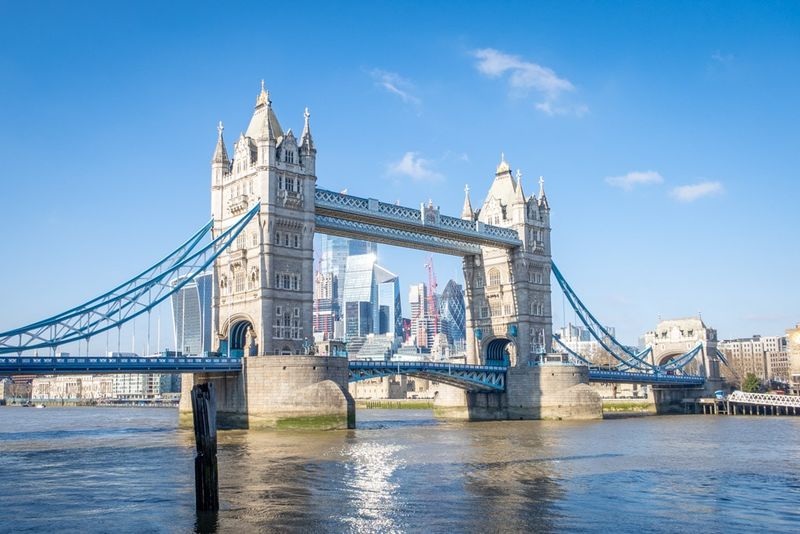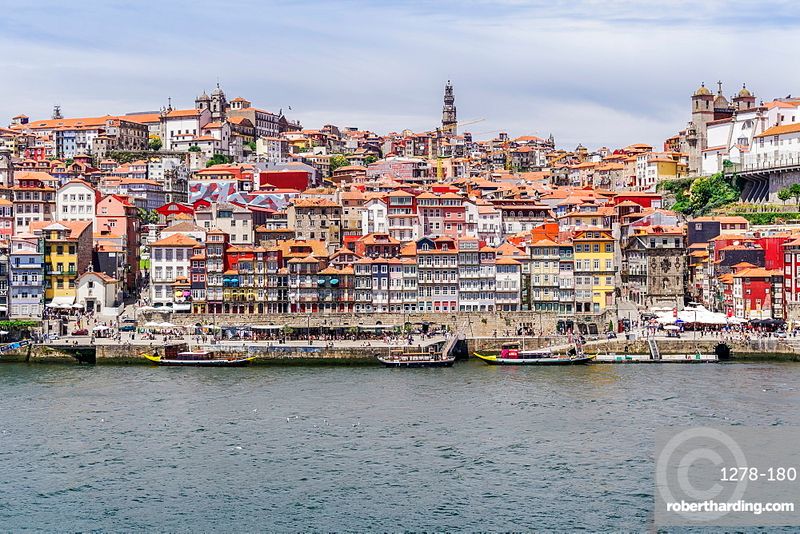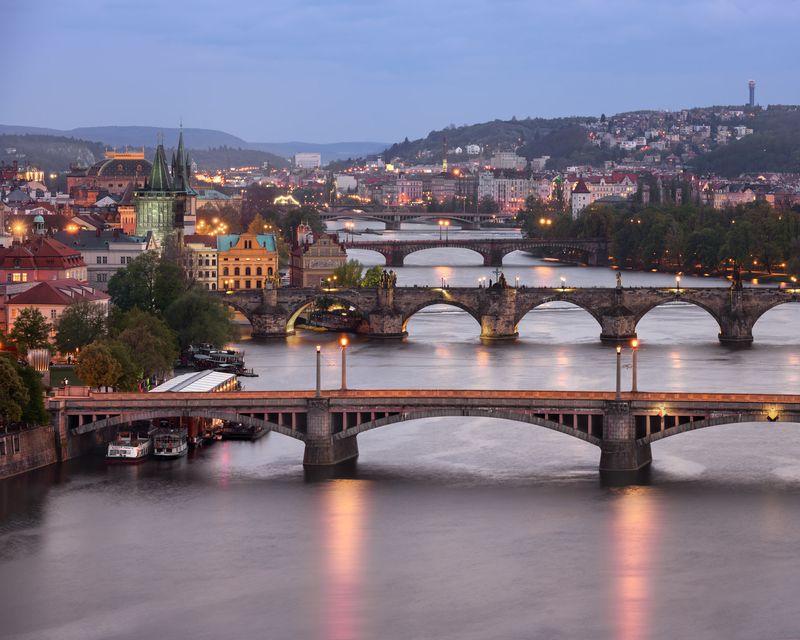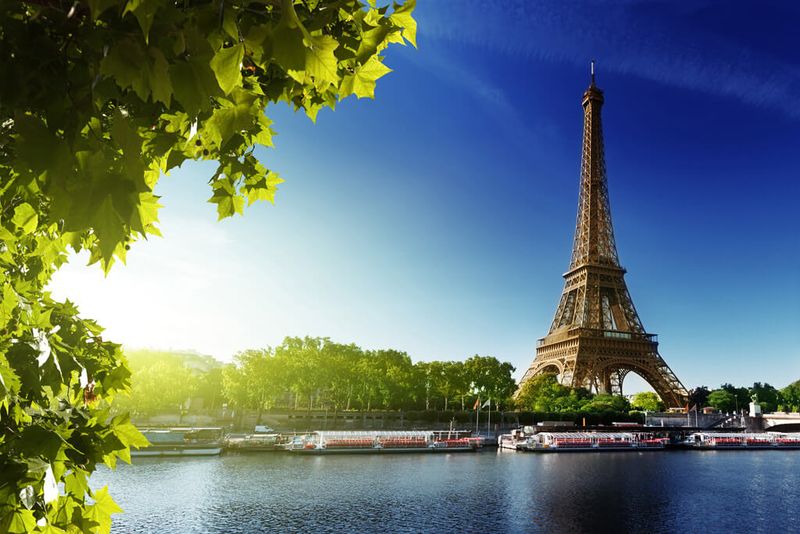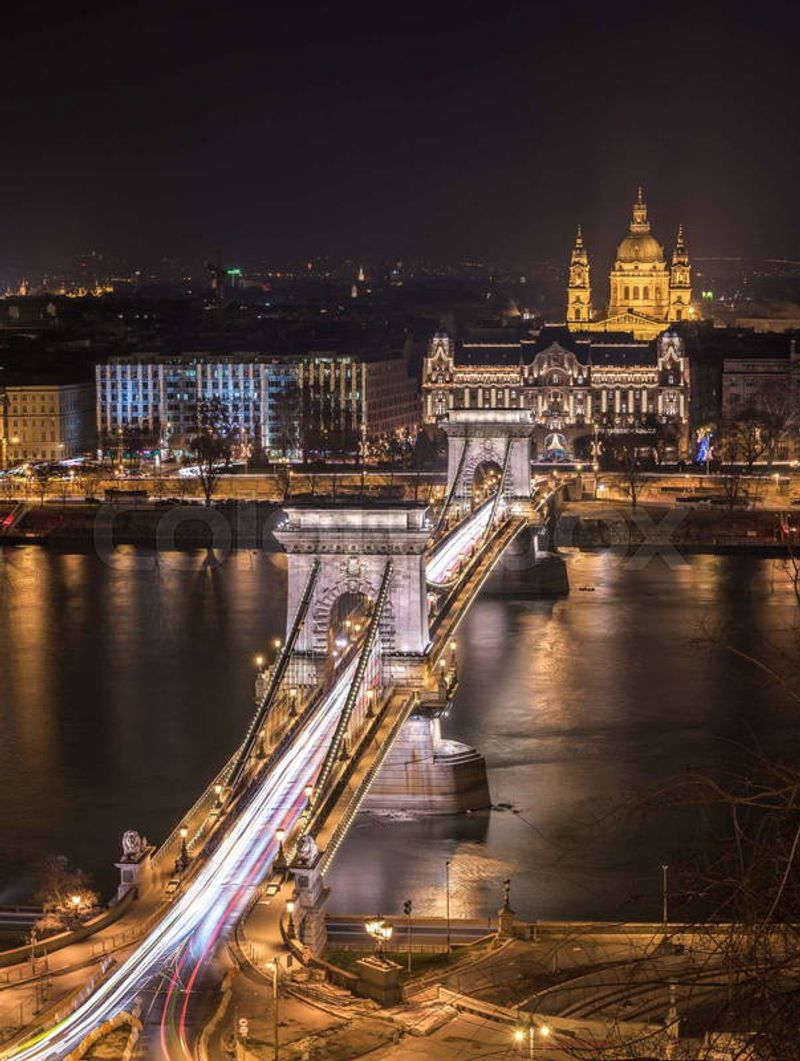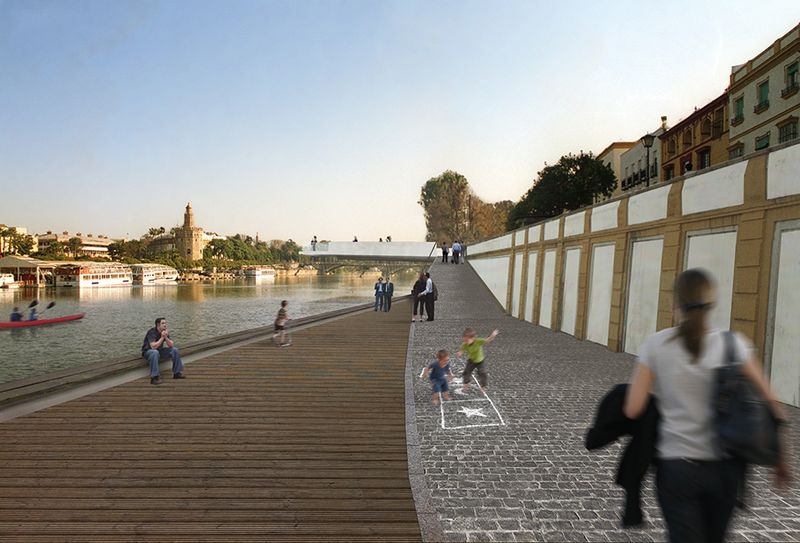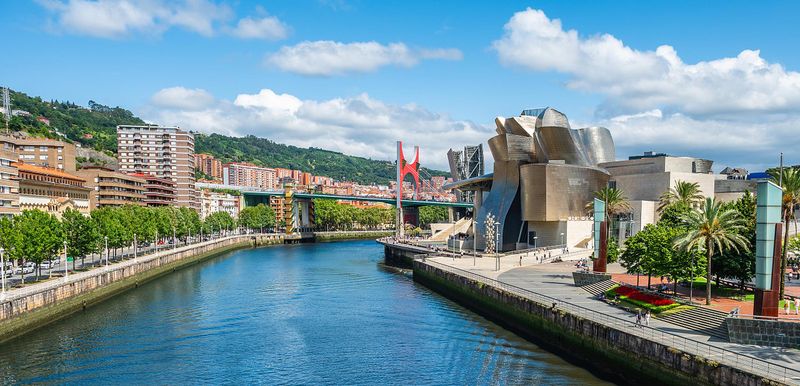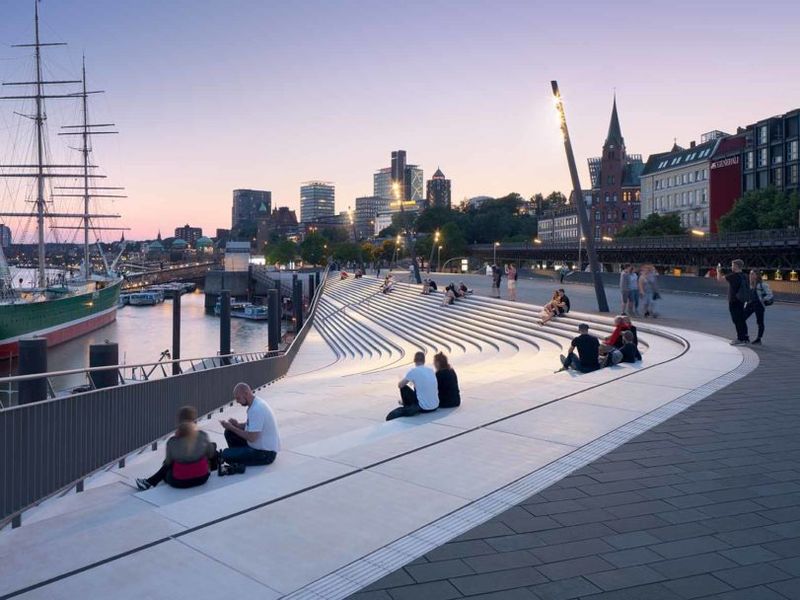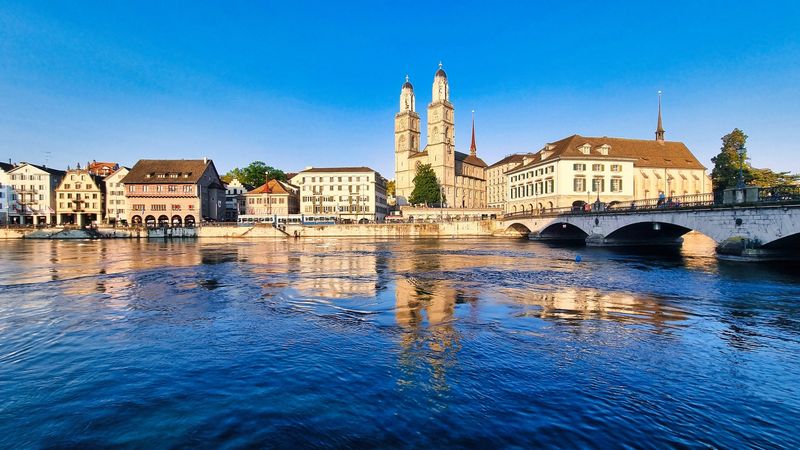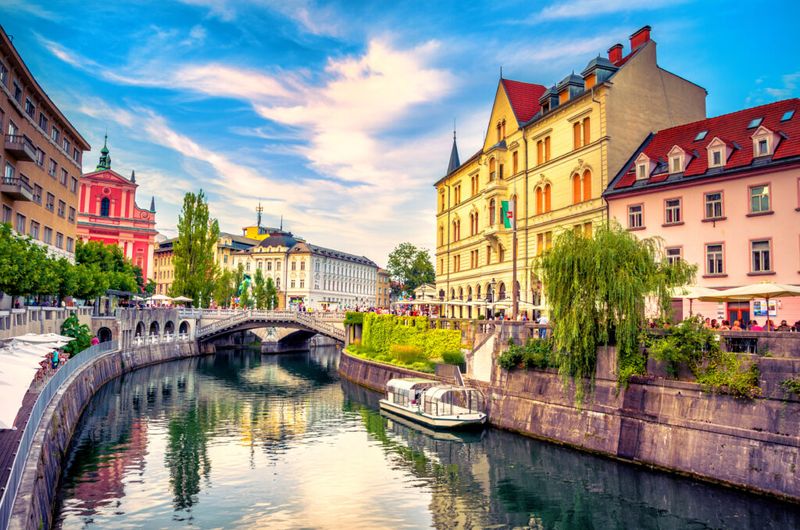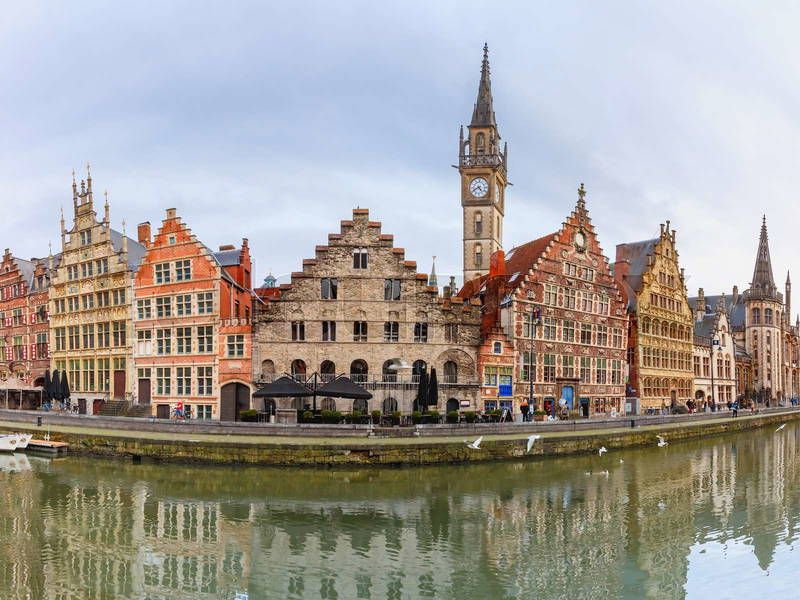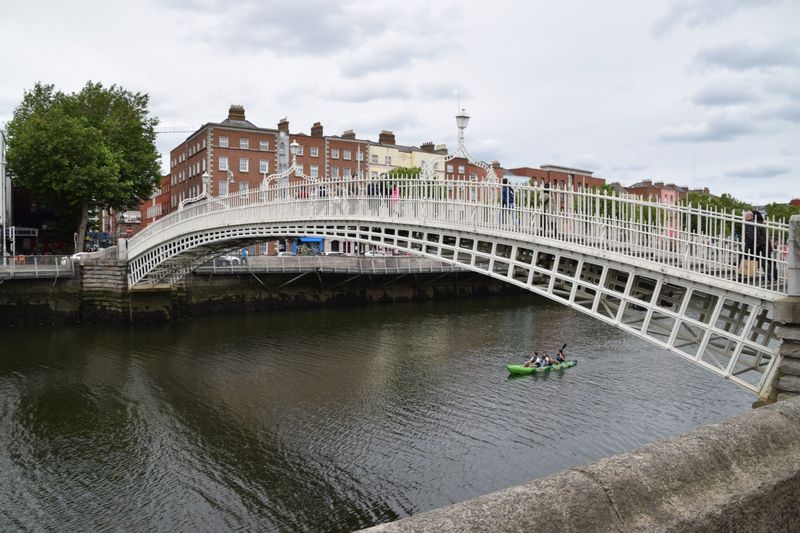Europe’s most beautiful cities are built around water, and their riverfronts tell stories of history, culture, and everyday life. Walking along these scenic paths gives you incredible photo opportunities, fresh air, and a chance to see locals going about their day. Best of all, each waterfront stroll leads to amazing restaurants and food markets where real residents eat, not just tourists. Get ready to explore some of the continent’s most stunning riverside and harborside walks, complete with delicious stops that will make your trip unforgettable.
1. London, UK — The Queen’s Walk (Thames Path, South Bank)
London’s South Bank buzzes with energy from sunrise to midnight. The Queen’s Walk stretches from the London Eye all the way past Shakespeare’s Globe to Tower Bridge, offering nonstop action and some of the best skyline shots in Britain. Street performers juggle fire, artists sketch portraits, and book stalls line the route.
This path was designed specifically for pedestrians, so you won’t dodge cars or bikes. Wide pavements make it easy to stop and snap photos whenever the mood strikes. The mix of historic landmarks and modern architecture creates visual variety at every turn.
Borough Market sits just a short hop from the riverside—a food lover’s paradise packed with artisan cheese, fresh oysters, and global street food. Locals shop here weekly, not just for tourists.
2. Porto, Portugal — Ribeira (Douro)
Porto’s Ribeira district looks like it jumped straight out of a vintage postcard. Narrow houses painted in ochre, coral, and cream stack up the hillside, their tiled façades glinting in the sun. Laundry flutters from wrought-iron balconies while traditional Rabelo boats rock gently on the Douro below.
This UNESCO-listed riverfront rewards slow wandering. Duck into tiny alleyways that spill back onto the water, or climb the stone steps for elevated views across to Vila Nova de Gaia’s wine cellars. Every corner offers another frame-worthy shot.
Taberna dos Mercadores hides near the quay—a tiny gem serving quintessential northern Portuguese plates. Locals book days ahead for their salt cod and octopus dishes, so plan accordingly if you want a table.
3. Prague, Czechia — Vltava by Charles Bridge
Prague’s Vltava River embankments feel almost mythical at sunrise. The water reflects spires, bridges, and castle towers in shades of rose and gold, while swans glide past the small islands that dot this stretch. Charles Bridge dominates the scene, but the quieter paths along the riverbanks often offer better photo opportunities without the crowds.
Early morning or late evening visits reward you with softer light and breathing room. The area transforms after dark too, with nightlife spilling onto the embankments and creating a completely different energy.
Ginger & Fred restaurant sits inside the quirky Dancing House, offering river views paired with Czech-modern cooking. The building itself—nicknamed for its wavy, dancing form—is worth seeing even before you taste the food.
4. Paris, France — Les Berges de Seine (Left Bank)
Few cities do waterfront romance quite like Paris. The Seine’s Left Bank quays between the Musée du quai Branly and Pont Alexandre III offer some of the most iconic views in the world—think golden bridges, houseboats bobbing gently, and that famous iron tower punctuating the skyline.
Golden hour transforms this stretch into pure magic. Photographers and couples flock here as the sun dips low, casting warm light across the stone embankments. Street musicians often play near the bridges, adding soundtrack to your stroll.
After your walk, head up to Les Ombres on the museum rooftop for modern French cuisine with front-row Eiffel Tower views. If you prefer something more casual, the Rosa Bonheur sur Seine barge near Pont Alexandre III serves drinks and snacks with a laid-back vibe locals adore.
5. Budapest, Hungary — Danube Promenade
Budapest earned its UNESCO World Heritage status partly because of this stunning riverfront. The Danube cuts the city in two, with Buda’s castle-topped hills rising on one side and Pest’s grand Parliament building commanding the other. Chain Bridge links them like a piece of Victorian jewelry.
Walking this promenade feels cinematic. The river mirrors everything—Gothic spires, neo-Renaissance domes, illuminated bridges—doubling the beauty. Blue hour (just after sunset) turns the scene almost surreal as lights flicker on across both banks.
Hungarikum Bisztró sits just off the riverside core, serving paprika-bright, homestyle Hungarian food that locals grew up eating. Goulash, stuffed cabbage, and chimney cakes all make appearances on a menu that celebrates tradition without fussiness.
6. Seville, Spain — Triana’s Paseo de Nuestra Señora de la O (Guadalquivir)
Seville’s Triana district pulses with flamenco soul and artisan craft traditions. The revamped Paseo de Nuestra Señora de la O runs along the Guadalquivir, giving you perfect views back toward the old city while keeping you rooted in the neighborhood where locals actually live and work. Ceramic workshops and tapas bars line the streets just behind the promenade.
This pedestrian-friendly path feels less touristy than the opposite bank. Palm trees provide shade, benches invite lingering, and street musicians often set up near the Triana Bridge. The vibe is relaxed yet vibrant.
Mercado de Triana sits right on the water, built over the ruins of San Jorge Castle. Inside, tapas counters and produce stalls offer authentic Sevillian flavors in a lively market atmosphere.
7. Bilbao, Spain — Abandoibarra & Paseo de Uribitarte (Nervión Estuary)
Bilbao transformed itself from industrial port to design destination, and nowhere shows this better than Abandoibarra. Sleek pedestrian paths wind past Gehry’s titanium-clad Guggenheim, Louise Bourgeois’ giant spider sculpture, and cutting-edge residential towers. Public art dots the route like an open-air gallery.
The Nervión estuary reflects these modern curves beautifully, especially on calm days. Architecture fans could spend hours here studying angles, materials, and urban planning that won international awards. Even non-architects find it visually stunning.
Nerua restaurant operates inside the Guggenheim itself, holding a Michelin star for seasonal Basque cooking. The tasting menus change frequently, showcasing local ingredients with the same creativity the museum applies to art.
8. Hamburg, Germany — Elbe Promenade (Jan-Fedder-Promenade & HafenCity)
Hamburg lives and breathes harbor life. The Jan-Fedder-Promenade stretches 1.3 kilometers along the Elbe between HafenCity and Landungsbrücken, offering constant maritime action—container ships, ferries, yachts, and historic vessels all sharing the water. The light here has a special quality, filtered through northern clouds and reflected off endless water.
This walk showcases Hamburg’s successful waterfront regeneration. Modern HafenCity buildings contrast with traditional brick warehouses, while the wave-like Elbphilharmonie concert hall crowns it all. Benches and viewpoints appear frequently for rest stops.
Störtebeker at the Elbphilharmonie pairs craft beer with Nordic-influenced plates, all served with big-sky harbor views. The restaurant celebrates Hamburg’s seafaring heritage through both its menu and its panoramic setting.
9. Zurich, Switzerland — Limmatquai (Limmat)
Zurich’s Limmatquai sweeps along the river through the heart of the Old Town, framing some of Switzerland’s most photogenic architecture. The twin towers of Grossmünster anchor one end, while Wasserkirche (literally “water church”) sits on what was once an island. Guild houses painted in soft pastels line the opposite bank.
Sunset transforms this walk into something special. The low light catches the church spires and guild house facades, while swans drift along the turquoise water. Locals jog, cycle, and stroll here year-round, making it feel authentically lived-in rather than staged for visitors.
Swiss Chuchi near Limmatquai specializes in classic fondue and raclette—the cheese-heavy comfort food Switzerland does best. The Old Town location means you’re steps from the river before and after your meal.
10. Ljubljana, Slovenia — Ljubljanica Embankments
Ljubljana banned cars from its center, turning the Ljubljanica River embankments into the city’s social living room. Café tables spill onto the cobblestones, willow trees dangle over the water, and Jože Plečnik’s graceful bridges connect both banks with architectural poetry. The scale feels intimate and human.
This is where locals meet for coffee, aperitivo, or lazy Sunday afternoons. The car-lite policy means you hear conversation, laughter, and live music instead of traffic. Summer brings even more life, with pop-up bars and cultural events lining the river.
Café Promenada offers riverside tables with a laid-back local vibe. Nothing fancy or pretentious—just good coffee, simple food, and prime people-watching from a waterside perch that captures Ljubljana’s easygoing spirit perfectly.
11. Ghent, Belgium — Graslei & Korenlei (Leie)
Ghent’s Graslei and Korenlei facing quays form one of Belgium’s most stunning medieval riverfronts. Step-gabled guildhouses from the 12th to 17th centuries line both sides of the Leie, their elaborate facades mirrored perfectly in the calm water. Each building tells a story—Grain House, Customs House, Masons’ Guild Hall—their names revealing their original purposes.
Photographers love this spot at any hour. The symmetry of the reflected buildings creates almost surreal compositions, especially when the water is still. Evening brings warm lighting that makes the old stones glow.
Du Progrès on nearby Korenmarkt serves classic Belgian brasserie fare—mussels, steak-frites, and abbey beers. Alternatively, De Graslei sits right on the quay, letting you dine with those guildhouse views directly in front of you.
12. Dublin, Ireland — Liffey Boardwalk & Quays
Dublin’s River Liffey cuts through the city center, and the boardwalk and quays offer an easy, central walk across historic bridges toward the revitalized Docklands. Ha’penny Bridge—so named because of the old toll—is the photogenic star, but the entire route captures Dublin’s mix of Georgian elegance and working-city grit.
This isn’t a manicured tourist path; it’s where Dubliners actually move through their day. You’ll see commuters, students, and street vendors alongside visitors, giving the walk an authentic urban energy. The bridges themselves are architectural gems worth pausing on.
The Winding Stair combines bookshop and restaurant in one beloved institution. Window seats overlook Ha’penny Bridge and the river, making it the perfect spot to rest your feet while enjoying Irish cuisine and literary atmosphere.
